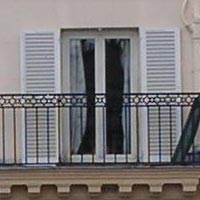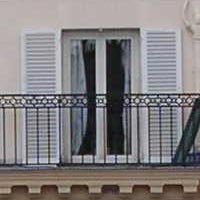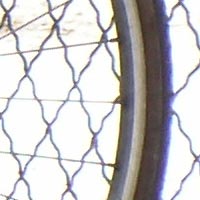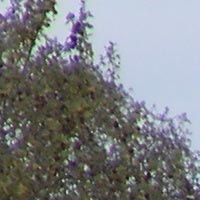Konica Minolta DiMAGE Z20
Review Date: April 21st 2005
|
Image Quality
All of the sample images in this Review were taken using the 2560 x 1920 image size with Fine quality, which gives an average image size of around 2Mb.
Noise
There are 4 ISO settings available on the Konica Minolta DiMAGE Z20 which you can select at any time. Here are some 100% crops which show the noise levels for each ISO setting:
ISO 50 (100% crop) |
ISO 100 (100% crop) |
 |
 |
ISO 200 (100% crop) |
ISO 320 (100% crop) |
 |
 |
The noise levels look fine at ISO 50 and 100, but some significant noise appears at ISO 200 and by the fastest speed of ISO 320 the quality is very poor.
Sharpening
Here are two 100% crops which have been Saved as Web - Quality 50 in Photoshop. The right-hand image has had some sharpening applied in Photoshop. The out-of-the camera images at the default setting of Normal are just on the soft side, with post-processing bringing out some extra detail.
Original 100% Crop |
Sharpened 100% Crop |
 |
 |
 |
 |
File Quality
The Konica Minolta DiMAGE Z20 has 3 different file quality settings available with Fine being the best option. Here are some 100% crops which show the quality of the various options, with the file size shown in brackets.
|
Fine (1.53Mb) |
Standard (866.4Kb) |
 |
 |
|
Economy (563.6Kb) |
|
 |
|
Chromatic Aberrations
The Konica Minolta DiMAGE Z20 handled chromatic aberrations fairly well. A handful of images out of all the test images that I took exhibited limited purple fringing, although this unwanted effect did occur in some situations that you wouldn't expect it to, as in the statue in Example 1. The other 3 examples are where chromatic aberrations typically occur - bright skies in the background with dark foreground objects.
|
Example 1 |
Example 2 |
 |
 |
|
Example 3 |
Example 4 |
 |
 |
Macro
The Konica Minolta DiMAGE Z20 offers 2 macro settings, Macro and Super Macro. The Super Macro setting allows you to focus on a subject that is just 1cm away from the camera. The first image shows how close you can get to the subject (in this case a compact flash card). The second image is a 100% crop.
|
Macro Shot (click to view full-sized image) |
100% Crop |
Flash
The flash options on the Konica Minolta DiMAGE Z20 are Autoflash with red-eye reduction, Fill flash, Slow-shutter sync and Flash cancel. These shots of a white wall were taken at a distance of 1.5m.
|
Flash Off - Wide Angle (36mm) |
Flash On - Wide Angle (290mm) |
 |
 |
|
Flash Off - Telephoto (36mm) |
Flash On - Telephoto (290mm) |
 |
 |
And here are some shots of yours truly. As you can see, neither the Flash On or Red-Eye Reduction settings caused any red-eye.
|
Flash On |
Flash On (100% Crop) |
 |
 |
|
Flash - Red-Eye Reduction |
Flash - Red-Eye Reduction (100% Crop) |
 |
 |
Night Shot
The Konica Minolta DiMAGE Z20 maximum shutter speed is 4 seconds which isn't that great for night photography. The following example was taken using a shutter speed of 4 seconds with an aperture of f/4.8 at ISO 50. I've included a 100% crop of the image to show what the quality is like.
|
Night Shot (click to view full-sized image) |
100% Crop |
 |
|
Overall Image Quality
The step-up from 3 megapixels on the Konica Minolta DiMAGE Z10 to 5 megapixels on the Z20 may give you bigger file sizes, but unfortunately the trade-off is poorer overall image quality. The Konica Minolta DiMAGE Z20's 5 megapixel images were soft at the default sharpening setting of Normal, but you can either choose the Hard setting or alternatively do some post-processing in an image editing program to make them sharper. Noise was well controlled at the slowest ISO settings of 50 and 100, but it was obvious at ISO 200 and very apparent by ISO 320. The Konica Minolta DiMAGE Z20 exhibited chromatic aberrations in both high and low contrast situations, although the effect was generally well controlled and not too noticeable. Macro performance was amazing, allowing you to focus just 1cm away from the subject, although shadow from the lens does tend to get into the shot. Night photography is limited by the maximum shutter speed of 4 seconds. Using the flash indoors produced good results, with the red-eye reduction mode working well. High noise levels and chromatic aberrations resulted in distinctly average images from the Konica Minolta DiMAGE Z20.
|
 PhotographyBLOG is a member of the DIWA organisation. Our test results for the Konica Minolta DiMAGE Z20 have been submitted to DIWA for comparison with test results for different samples of the same camera model supplied by other DIWA member sites.
PhotographyBLOG is a member of the DIWA organisation. Our test results for the Konica Minolta DiMAGE Z20 have been submitted to DIWA for comparison with test results for different samples of the same camera model supplied by other DIWA member sites.



